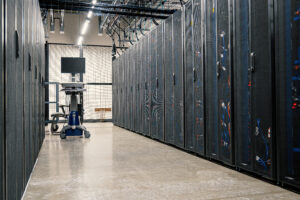Data Centres are simply centralised locations where computing and networking equipment is concentrated for the purpose of collecting, storing, processing, distributing, or allowing access to large amounts of data. They have existed in one form or another since the advent of computers.
In the days of the room-sized behemoths that were our early computers, a data center might have had one supercomputer. As equipment got smaller and cheaper, and data processing needs began to increase — and they have increased exponentially — we started networking multiple servers (the industrial counterparts to our home computers) together to increase processing power. We connect them to communication networks so that people can access them, or the information on them, remotely. Large numbers of these clustered servers and related equipment can be housed in a room, an entire building or groups of buildings. Today’s data centre is likely to have thousands of very powerful and very small servers running 24/7.
Because of their high concentrations of servers, often stacked in racks that are placed in rows, data centres are sometimes referred to as server farms. They provide important services such as data storage, backup and recovery, data management and networking. These centres can store and serve up Web sites, run e-mail and instant messaging (IM) services, provide cloud storage and applications, enable e-commerce transactions, power online gaming communities, and do a host of other things that require the wholesale crunching of zeroes and ones.

